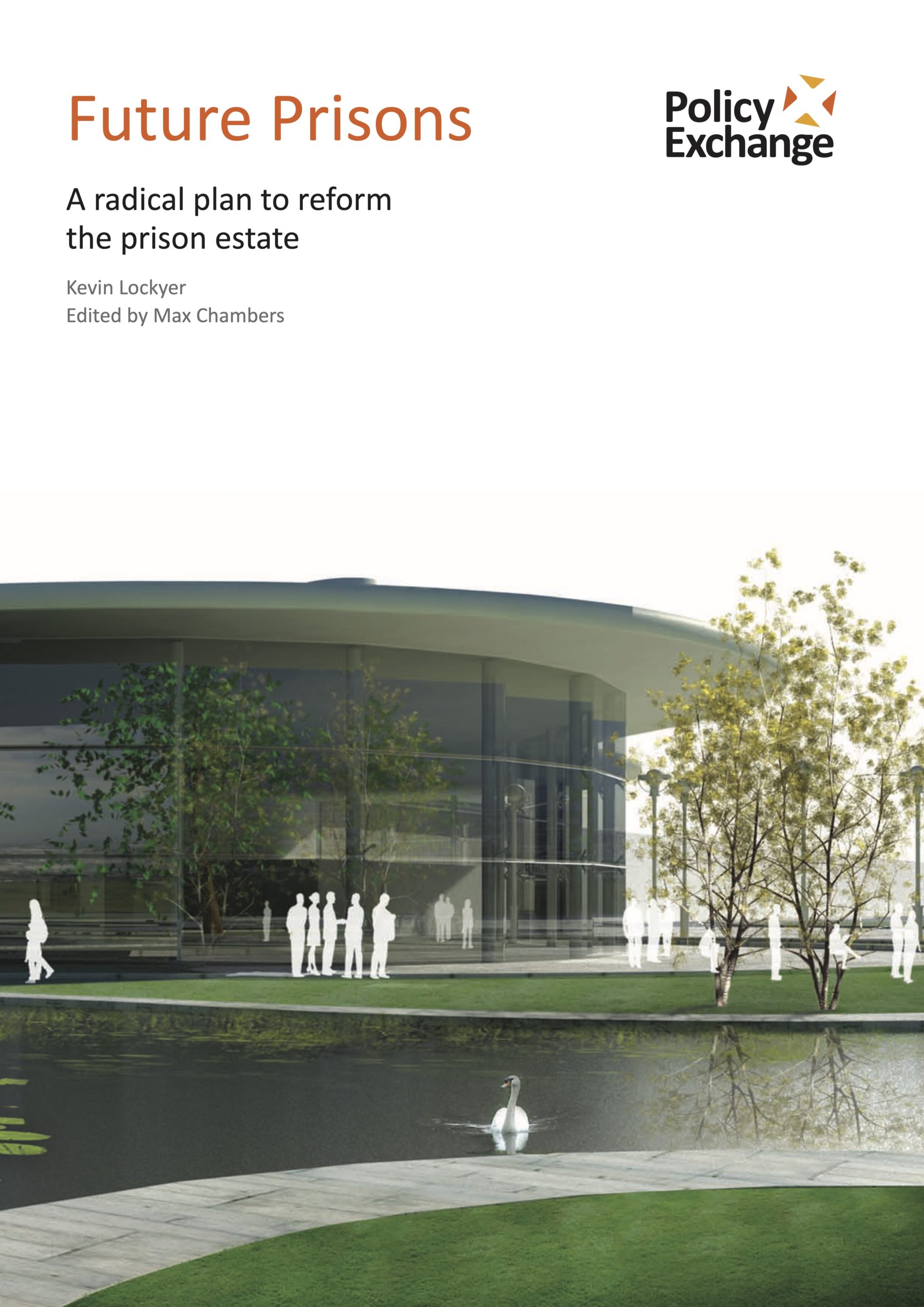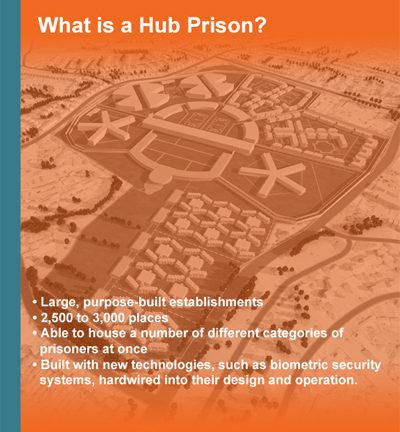
Future Prisons: A radical plan to reform the prison estate
Future Prisons calls for the government to shut more than 30 run-down and poorly-located prisons and replace them with 12 state of the art ‘Hub Prisons’, containing up to 3,000 inmates. The new prisons would lead to huge costs savings, a reduction in reoffending rates and a better quality of life for prisoners and prison staff.
The report says that the Ministry of Justice (MoJ) could meet its entire 2015/16 spending commitment by ‘swapping old for new’ and financing the construction of new, large prisons to replace expensive, hard-to-maintain and poorly-located older prisons. In operational costs alone, this plan would save more than £600 million a year on completion – fully 20% of the prison budget. This is equivalent to around 9% of the MoJ’s entire departmental budget.
Taking construction into account, which could be financed through public sector borrowing, private finance or development finance, the savings would amount to around £10 billion over a 25 year repayment period.
The report, written by Kevin Lockyer, a former prison governor and deputy director in the MoJ, argues that trying to simply cut prison numbers and closing down prisons is not the right way to reduce the prison population or protect the public. Instead the focus must be on how to reduce the cost per prisoner. Costs vary widely across the country from £108,000 per place at HMP Kennet to £26,000 at Wayland.
Brand new analysis comparing establishments with the same functions, shows for the first time that age is the key determinant of a prison’s effectiveness, rather than size: newer prisons had lower reoffending levels, a greater respect between staff and prisoners and a better quality of life and safety measures than older prisons.
It argues that the Conservatives and penal lobby were correct to dismiss Labour’s 2007 plans to build new Titan ‘super’ prisons, proposed to facilitate a large expansion of the prison estate without evidence of effectiveness. However, the new proposal greatly differs from the Titan scheme in that Policy Exchange is not suggesting an expansion of the prison estate but merely the replacement of old for new establishments. The report shows that a quarter of prisons are Victorian or older while a further quarter were built in the 1960s and 1970s, often to poor standards and designs with poor materials.
Hub Prisons would also be materially different to Titans. To date, a campus-style approach centred around a shared-service hub has been considered expensive in terms of the staff required for it to run securely and safely. But the Policy Exchange proposal, with its use of innovative technology, makes this kind of approach affordable. Hub Prisons would contain relatively small, self-contained, housing units and plenty of open spaces. They would include a range of accommodation types, with more traditional radial-style houseblocks for remand prisoners and assessment and induction purposes, and with smaller living units for longer sentenced prisoners
The report recommends:
- Closing more than 30 run down and dilapidated prisons and constructing 10-12 state of the art Hub Prisons.
- Locating the prisons on brownfield sites near to main transport routes and to hold more prisoners as close to home as possible.
- Constructing the prisons using cutting-edge architecture, with technologies such as biometric security systems. Halfway houses would be located inside the prison estate and the sites would include courts to cut the cost of transferring prisoners for trial.
- Allowing private providers to compete on a level playing field with the public sector to manage and run the new establishments.
See full infographic
Impact
On 4th September 2013, Justice Secretary Chris Grayling announced that four outdated prisons would be closed and replaced with two new super prisons. The closures include HMP Dorchester, one of the prisons recommended for closure in Future Prisons.


